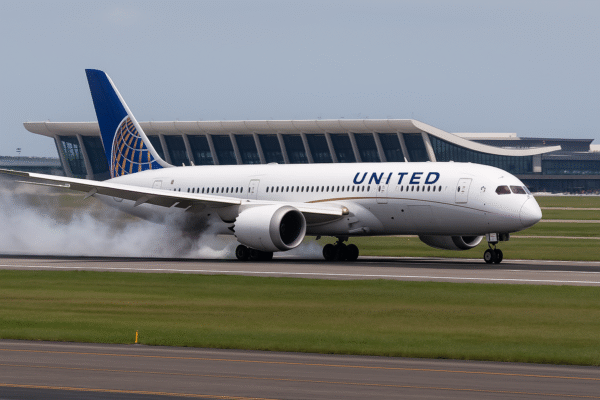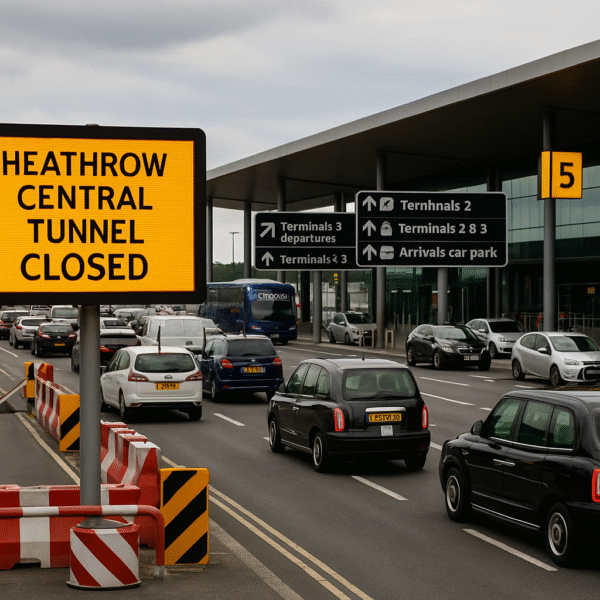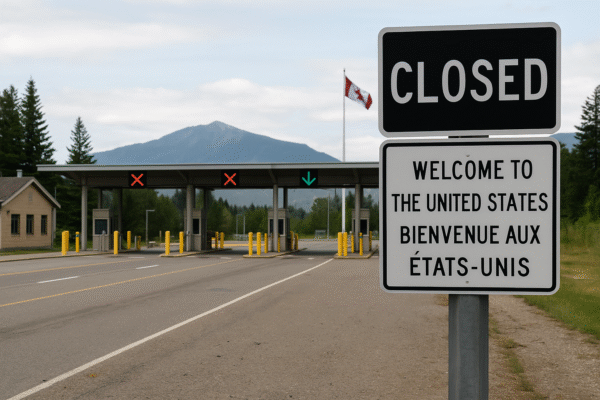Thousands of travellers faced unexpected disruption at London’s Heathrow Airport today after a critical technical fault forced the sudden closure of the main central tunnel connecting Terminals 2 and 3. This unforeseen incident triggered a chain reaction of delays, overcrowding, and emergency rerouting, affecting both international tourists and UK-based passengers.
Sudden Technical Fault Disrupts Operations
At approximately 9:30 AM BST, Heathrow Airport authorities announced the immediate shutdown of the central tunnel due to an undisclosed technical malfunction. While the precise cause remains under investigation, preliminary findings suggest failures in key infrastructure systems—potentially involving tunnel lighting and ventilation mechanisms critical for safety and operational continuity.
According to Heathrow’s official X (formerly Twitter) account and website updates, safety was the top priority, prompting swift action to avoid any hazards for passengers and staff.
Heathrow’s Emergency Response and Rerouting Through Terminal 5
In response, Heathrow’s crisis management team launched an emergency rerouting strategy, directing all incoming and outgoing travellers for Terminals 2 and 3 to pass through Terminal 5 instead. Airport transit trains were mobilized to facilitate internal transport between terminals, and passengers were strongly advised to allow extra travel time.
Clear signage, increased staff presence, and real-time announcements helped manage the rerouting process. However, the sheer volume of passengers during peak travel hours caused significant bottlenecks, resulting in extended wait times and delays for both departures and arrivals.
Severe Traffic Congestion Hits Surrounding Areas
Beyond the airport perimeter, local road networks experienced extreme congestion. The M4 spur road, a primary access route to Heathrow, was gridlocked for several hours. Transport for London (TfL) urged travellers to consider alternative means such as the Heathrow Express, Elizabeth Line, or Piccadilly Line on the London Underground.
The disruption served as a stark reminder of how critical transport infrastructure is to maintaining smooth operations at Europe’s busiest airport.
Spotlight on Heathrow’s Infrastructure Vulnerabilities
This incident comes at a critical time for Heathrow Airport, which has been the subject of heated discussions over its infrastructure readiness and capacity management. The closure highlights the challenges the airport faces in maintaining and upgrading aging facilities, particularly as passenger volumes rise post-pandemic.
Heathrow’s £49 billion expansion master plan—which includes a proposed third runway—has received government backing, citing its potential to enhance the UK’s global connectivity. Yet, today’s tunnel malfunction has intensified scrutiny over whether existing infrastructure can cope with current demands, let alone future growth.
Government and Environmental Stakeholder Perspectives
The UK Government continues to champion Heathrow’s expansion as a key driver of economic growth. However, environmental campaigners, local residents, and advocacy groups remain fiercely opposed, citing noise pollution, air quality concerns, and the risk of failing national carbon neutrality goals by 2050.
As infrastructure-related issues mount—including last month’s nationwide air traffic control radar failure—calls for more rigorous infrastructure audits and climate-sensitive planning are gaining momentum.
Repair Efforts and Expected Timeline for Reopening
Heathrow Airport’s engineering and operations teams are actively engaged in repairing the affected tunnel systems. Although no formal reopening time has been provided, airport officials have committed to ongoing transparency and timely communication. Real-time updates are being shared via Heathrow’s official website, app, and social media platforms.
Passengers planning travel in the coming days are strongly encouraged to monitor flight status updates and check for terminal-specific instructions before heading to the airport.
Tourist Advisory: What You Need to Know
If you’re a tourist flying into or out of Heathrow this week, here are the key takeaways:
- Check Flight Updates: Use the Heathrow app or website to verify your terminal and gate.
- Use Public Transport: Avoid driving if possible. Opt for the Elizabeth Line, Heathrow Express, or London Underground.
- Arrive Early: Allocate extra time for check-in and security due to the ongoing rerouting through Terminal 5.
- Ask for Help: Additional airport staff have been deployed to assist and guide passengers through the disruption.
What This Means for the Future of Heathrow Travel
This tunnel closure underscores the importance of robust, future-ready infrastructure at major international transport hubs. Heathrow’s quick response was commendable, but today’s event reinforces the urgency for long-term investment in safety-critical systems, contingency planning, and sustainability.
For Heathrow to maintain its status as a global aviation leader and gateway to the UK, a renewed focus on operational resilience and smart expansion is essential.
Looking Ahead: A Test for Heathrow’s Readiness
As holidaymakers, business travellers, and international tourists continue to pass through Heathrow, today’s incident may serve as a defining moment. Not only does it put existing operations under the microscope, but it also raises broader questions about how prepared the airport is for a rapidly evolving aviation landscape.
Heathrow’s ability to adapt and modernize will be crucial—not just for tourism—but for the entire UK economy.
For more travel news like this, keep reading Global Travel Wire




















